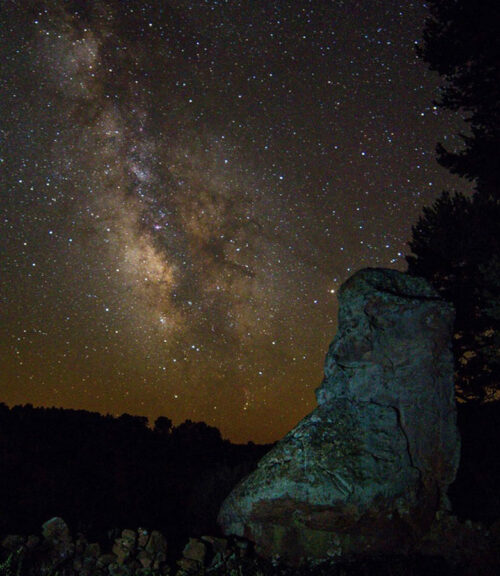The Sierra de Albarracín is located in one of the darkest areas of the Iberian Peninsula, which together with other tourist attractions and the services this territory has to offer, make it an important stargazing destination. The quality of its sky is linked to great expansions of both mountainous and barren regions, which facilitates a great field of vision, and the low light pollution makes the contrast exceptional, making it a great attraction for tourists to discover the unexplored side of Albarracín.
According to experts, in the mountains of Albarracín you can see about 6000 stars, while in large cities like Valencia, Zaragoza or Malaga, light pollution means you can only see about 300 in the periphery of these urban centres.
Albarracín offers routes and trails where you can partake in evening activities with the right conditions (full moon and the Milky Way), spaces that are found in areas of high environmental value.
Additionally, the entire region has responded to this interest in stargazing, and different towns and places offer astronomical experiences for enjoying these fantastic starry nights.



Starlight Reserve and Destination


In 2020, the Sierra de Albarracín received the Starlight Reserve certification, accrediting a protected natural space committed to astronomy. It also received the title of Starlight Tourist Destination, which indicates that a tourism destination is especially suitable for developing tourism activities based on this natural resource, both due to its inherent qualities and because it is protected from light pollution.
The Starlight certification offers a different way of appreciating a star-studded sky. It also fights to protect it, to care for a scientific and cultural heritage that belongs to everyone, while safeguarding the habitat of a large number of species where the night is their main way of life. Starlight is an integrated action of the United Nations Educational, Scientific and Cultural Organization (UNESCO) and is supported by the International Astronomical Union (IAU) and by the World Tourism Organization (UNWTO).
This cooperation project included the installation of viewpoints or places of interest for observing the night sky in the 25 municipalities of the Sierra de Albarracín Region. Some of the measurements carried out result in figures similar to large observatories such as those located in the Canary Islands.They are not the only points for stargazing, as the low light pollution provides the perfect opportunity to observe the celestial dome from any point of the mountain range. Each viewpoint is equipped with interpretation panels on astronomical themes, as well as an arrow to be able to locate the Polar Star.
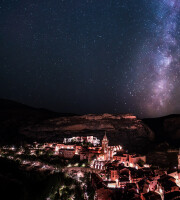
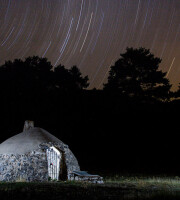


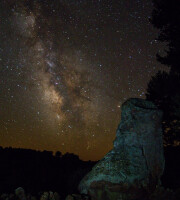

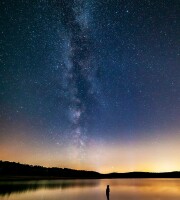

Activities
Berrea bajo las Estrellas (bellowing under the stars)
From the immense natural richness of this mountain range, we propose a different autumn activity: Berrea Bajo las Estrellas (bellowing under the stars) where, with the help of biologists and expert guides, you can watch deer mating at sunset and listen to the bellows that reverberate throughout the forest, alternating with the rutting of their antlers, provoking unique sensations.
Top off the experience with a stargazing session under a clear, starry night sky. You also have the chance to enjoy the reflection of the celestial dome next to a lagoon or take advantage of the different types of vantage points both from the Albarracín city walls, the viewpoints in El Rodeno or the surrounding areas.
Come and enjoy it
Times and things to take into consideration
Schedule and seasons: Routes are organised during the summer to learn about the quality of the sky and the elements you want to photograph: The Milky Way, the Moon, circumpolar constellations, etc. In summer our departures are later, as conditions aren’t perfect until 23:30, and we return in the early hours. In the winter we set off earlier, around 18:30, returning at approximately 22:00.
Choose the place well: Select spots where you can compose photographs with ruins, villages, places with water, trees… The mountain range lends itself very well to these types of compositions and offers us a multitude of unique places where you can immortalise the starry sky. Studying the site and getting to know the land previously will be the key to success in our days of stargazing and photography. Ideally, go a few days beforehand to view the site and plan the orientation of the photos, and arrive there before dark on the chosen day. You can make the most of that time to take photos of the sunset, the blue hours or spend time planning with the lunar phases.
More information
Complementary information for your visit to Albarracín


